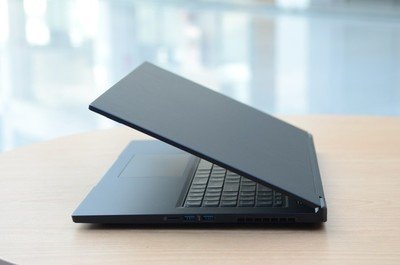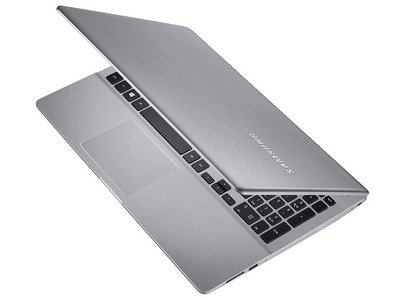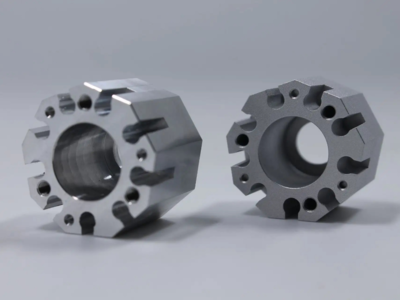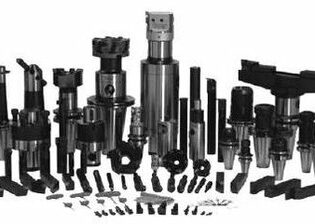Analysis of workpiece situation
The object of machining is the laptop shell, and the material is magnesium alloy ME20. Due to the complex structure and high dimensional accuracy requirements of this component, it is formed using the method of milling the entire magnesium alloy sheet. Magnesium alloy machining differs significantly from traditional aluminum alloy machining in aspects such as tool selection, cutting parameter selection, cutting scheme selection, cutting fluid selection, corrosion prevention measures, and chip disposal.
The choice of cutting tools
Magnesium alloy has excellent thermal conductivity, a soft material, and low cutting forces, resulting in rapid heat dissipation during the machining process, minimal chip adhesion, and a consequently long tool life. However, tools used for magnesium alloy machining need to maintain a sharp cutting edge because tools with significant edge wear can increase friction during the cutting process. This can lead to a substantial rise in cutting temperature, causing magnesium chips to ignite or even burn, thereby increasing safety risks in the cutting process. Therefore, magnesium alloy machining generally requires the use of new hard alloy tools and prohibits the mixed use of old tools used for other materials.
The general design principles for tools used in machining steel and aluminum also apply to tools used for machining magnesium alloys. Due to the low cutting resistance and relatively low heat capacity of magnesium alloys, the number of teeth on milling cutters for magnesium alloy machining is typically higher than for other metals. Reducing the number of teeth can increase chip space and feed volume, thereby reducing frictional heating, increasing chip clearance, lowering distortion of crushed chips, reducing power consumption, and minimizing heat generation. In our company, when machining magnesium alloys, three-flute hard alloy end mills are generally preferred.
In special cases, such as when the length or diameter specifications of three-flute tools are inadequate, four-flute hard alloy end mills can also be used.

Selection of cutting fluid
Magnesium alloy, being a soft and easily machinable material, can achieve extremely smooth machining surfaces whether high or low speeds are used, with or without cutting fluid. Dry machining without cutting fluid can reduce processing costs and facilitate the collection and transportation of waste chips. Therefore, many references recommend dry machining.
However, there is a fire risk associated with dry machining when high speeds and fine chips are involved. This necessitates CNC operators to continuously observe the machining process and be ready to extinguish any fires promptly in case of ignition. While this approach poses an unquantifiable risk, it limits operators from adopting a one-person, multiple-machine work mode, which may not be cost-effective in terms of overall processing costs and efficiency.
In addition, magnesium alloy tends to expand when heated. According to data, the linear expansion coefficient of magnesium alloy in the temperature range of 20 to 200°C is between 26.6 and 27.4 μm/(m-°C) (depending on alloy composition). Taking a length dimension of 200mm as an example, a temperature increase of 10°C during the machining process can result in a machining error ranging from 0.0532 to 0.0548mm. It is evident that without cutting fluid for cooling in dry cutting, the magnesium alloy part will quickly expand due to the rapid temperature rise, thereby affecting machining accuracy. Since the laptop shell demands high dimensional accuracy, such temperature effects cannot be ignored.
Considering these two factors, the CNC machining of magnesium alloy in this case adopts “wet machining” with the use of cutting fluid.

Selection of the cutting parameters
The cutting parameters for CNC milling include spindle speed, feed rate, tool cutting depth, and tool cutting width.
We have chosen a domestically produced machine for machining magnesium alloy. The theoretical maximum spindle speed of this machine can reach 8000 r/min, with a maximum feed rate of 15 m/min and machining accuracy of 0.01 mm. Sustaining the machine at the highest speed for extended periods is detrimental to its health. Excessive feed rates, especially for small-batch production, may not save much time but significantly increase the risks of quality issues and equipment failures. Therefore, we have opted for a strategy of large cutting depths and small feed rates to determine our cutting parameters.
Based on our company’s extensive CNC machining experience, the cutting parameters of hard alloy end mills vary in spindle speed and feed rate when machining different materials. However, cutting depth and cutting width generally do not change much. For rough machining, a recommended cutting width is 50% to 100% of the tool diameter (D), and the recommended cutting depth is 0.3 to 0.5D. For finishing, a recommended cutting width is 0.1 to 0.5 mm, and the cutting depth is 0.5 to 1D.
In the development of machining strategies, there is not much difference between machining magnesium alloy and common aluminum alloy materials. The only variation is in the finishing allowance, where a minimum allowance of 0.2 mm is recommended to avoid generating overly fine chips and prevent machining ignition.
Magnesium alloy, being soft and easily machinable, may generate significant cutting heat with high spindle speeds and feed rates, leading to ignition. Therefore, taking into account both efficiency and safety, our company has conservatively adopted spindle speeds and feed rates 1.5 to 2 times those used for cutting aluminum alloy.

Anti-corrosion measures in magnesium alloy processing
Generally, magnesium alloys are considered chemically active and prone to corrosion, especially when magnesium alloy parts come into contact with cutting fluid during “wet” machining. However, based on our unit’s processing experience, if effective corrosion prevention measures are adopted within a relatively short processing cycle, it will not lead to severe corrosion affecting structural strength or surface roughness.
We employ the following measures to mitigate corrosion in magnesium alloy machining:
1.Magnesium alloy CNC machining must be continuous, and parts soaked in cutting fluid should not be left on the worktable for an extended period, especially overnight.
2.After completing the machining, magnesium alloy parts should be rinsed in clean water to thoroughly dilute residual cutting fluid.
3.Rinsed magnesium alloy parts should be quickly dried using a high-pressure air gun and then wiped dry with clean cotton cloth (see Figure 3).
4.Finished parts can be temporarily placed in a foam box, avoiding contact with other metals.
5.If parts are left for an extended period or during transit, they should be placed in a dry plastic bag, and the bag opening should be folded to ensure relatively low air circulation inside the bag.
In reality, although these methods are simple and practical, they cannot completely eliminate magnesium alloy corrosion. Even if the part’s surface darkens or develops a small amount of black spots, these can be removed by dry sandblasting. Determining whether the level of corrosion on the magnesium alloy surface is acceptable requires thorough communication with technical personnel involved in the surface treatment stage, and the establishment of corresponding annotations and specifications.









